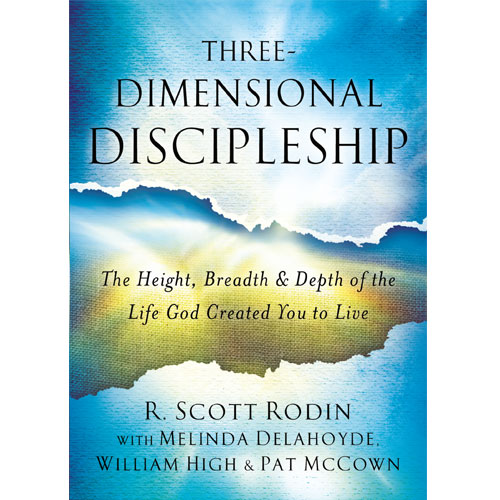Envisioning a New Way to be the Church: A Proposal

Last Sunday, we went online to make reservations to be able to go to church, sat on the lawn in camp chairs, wore masks and waved to each other as a new form of “passing the peace.” Clearly, church has been changed dramatically by the coronavirus. But there are a host of other reasons to believe that the function and efficacy of the local church has changed forever. The question is, will we change with the changing times? I’d like to propose a new way of considering what it means to make disciples, share the gospel and serve our neighbors as a local church.
My proposal is based on the following five assumptions.
- People will not return to church after COVID-19 as they did before. The days are gone when people in the hundreds and thousands will gather closely together indoors to worship. How will the church worship, form disciples and share the gospel in a post-COVID era?
- We will not attract younger people to the church nor introduce them to Jesus in the current form in which we do church. Studies show a growing reluctance of younger generations to attend organized religious services and a decrease in millennials who are joining traditional churches. How will the church attract new and younger members if the very church structure is seen as irrelevant?
- We will not form disciples and overcome the plague of biblical illiteracy among the body of Christ without a significant change in the way we understand how church is done. The local church’s long struggle with spiritual formation in an age of consumerism and frenetic lifestyles is producing a biblically illiterate and spiritually immature body. How can the church truly shape and form disciples who are biblically informed, spiritually mature and prepared for the challenge of these days?
- The day is coming soon when we will no longer be able to insulate church hiring and operational practices from the coordinated attacks on religious freedom in our country. With the recent supreme court decisions, it seems inevitable that the practices of the church are going to be severely compromised and the religious exemption undermined, forcing churches to operate in ways that directly contradict biblical values. How will churches continue to operate when their policies and practices are no longer able to consistently reflect kingdom ethics?
- There are models that can teach us a better way to do church, and the best place to look is where the church has thrived in times of persecution. What can we learn from churches who have flourished in a hostile culture?
Based on these assumptions and to address these questions, I want to propose a new way for the church to be the church. Like any solution, this one has its advantages and challenges, but I hope at least to start a dialogue as we consider our call to be faithful stewards in an age unlike any we’ve seen before.
For our model, let’s use the average church size of 200 weekly worshipers on a given street corner in America. Imagine, instead of building and maintaining physical structures for 250 to 300 people to gather for worship once a week (you need to have more room than worshippers if you want to be welcoming to visitors, according to church growth experts), the new church in America is designed as a gathering place not for worship but for community, fellowship, youth and ministry outreach. The communities and neighborhoods around churches begin to see them as places where they can access services, find true fellowship and find opportunities to better their lives. The church becomes an asset and resource in the community. Buildings are designed specifically for ease of access, multi-purpose opportunities to serve, welcoming and inviting atmosphere, and a place where the body of Christ operates as a true spiritual community.
In addition, the physical building is outfitted with a state-of-the-art media center where sermons are prepared and broadcast, videos are produced at the highest quality and the church presents the gospel in a relevant, technologically sound way.
What about the congregation? We take our cue from the church in China which has experienced explosive growth under the strictest levels of persecution. They did it because they formed small house churches led by individual house shepherds. Imagine our 200-member congregation divided up into 10 house churches of 20 people each. Each house church has a trained shepherd, a volunteer lay person who facilitates the work of the house church. House churches are organized geographically, but also strategically to include a mixture of generational, ethnic, gender and socioeconomic diversity. House churches meet twice a week (or more?). Once a week, they gather for worship which includes watching a sermon broadcast. This gives the lead pastor an opportunity to control the messaging, teach the congregation and ensure biblical depth and theological soundness. The rest of the work of the congregation is done through the shepherd in the house church setting. This gives significant opportunities for discipleship, building deeper relationships, ministering to one another, accountability, and opportunities to serve together.
How many of us have experienced our greatest spiritual growth in the context of a small group?
There are several other advantages to this structure. First, it is a far more inviting setting for new people. Going to someone’s house with friends takes away the stigma of driving to a large church, walking into an unknown setting, listening to strange liturgy and feeling out of place. If we are to invite new young believers to join the body of Christ, I believe it will happen in a small group, house church setting.
Second, it takes away our society’s ability to undermine the values of the organized church. Much less staff are required in this setting since the majority of leaders are volunteers. This allows the church to thrive in an age of increasing animosity and persecution toward the organized church. In fact, this is an anti-organized church movement that will stand up to the current attempts to keep the church and its influence locked away behind closed doors. The greater the persecution, the more the church has a chance to thrive as it has in China.
Third, this is where true discipleship takes place. Here is where the body of Christ can engage in hard discussions, deep Biblical study and application, intercessory prayer and accountability. Spiritual formation happens best in the context of the small group. Imagine a wave of deeper discipleship and greater faithfulness that can result from the house church structure.
Fourth, when the congregation does meet together in person, the focus is on fellowship, ministry outreach, service, evangelism and youth. Church buildings serve to catalyze the formation of a joyful, Christ-centered community that serves its neighbors and shows the love of Jesus in tangible, winsome ways.
Finally, this structure is more pandemic-proof. The first gatherings permitted under the easing of coronavirus restrictions were groups of 20 or less in private settings. Given the likelihood of future such global events, this system provides the church with the opportunity to persevere and thrive.
I believe this structure – with the main church buildings transformed into valued resources dedicated to ministering to the community, and the congregation meeting in dynamic house churches – is a formula worth considering as we seek to be salt and light in an ever-darkening world.
I welcome your thoughts.





